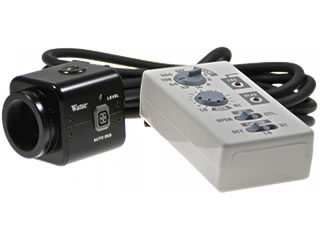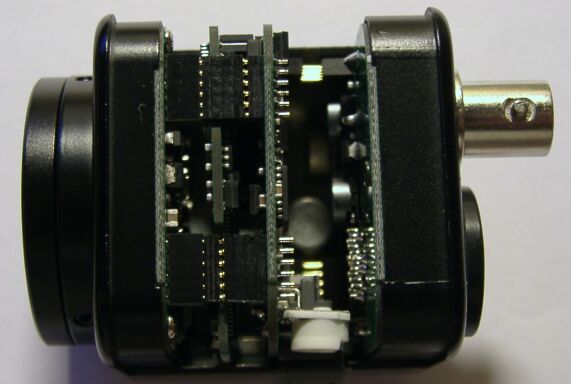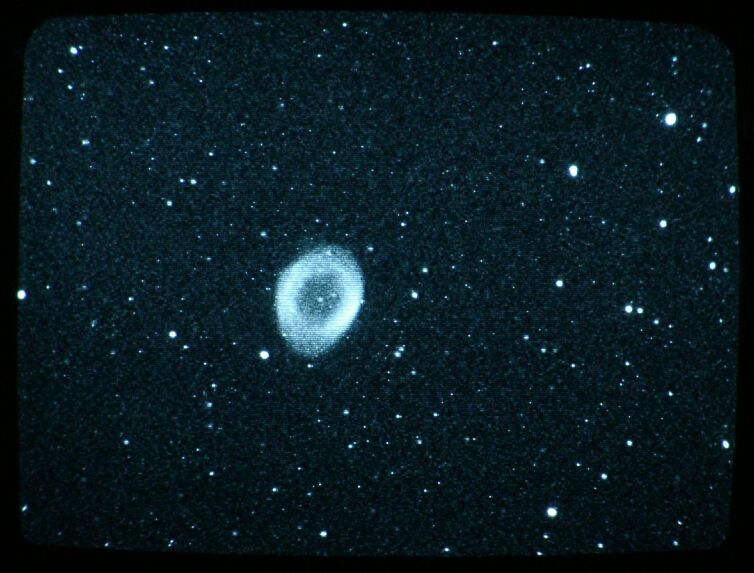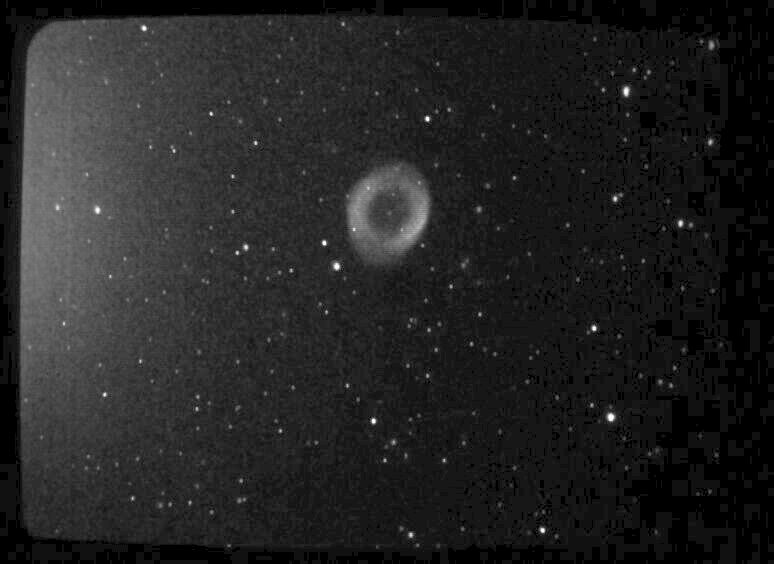 For a few days i have had the opportunity to test a new, highly sensitive video-camera, a
Watec WAT120NRC, which is a strong competitor to the well known
Mintron MTV-12V1-EX.
For a few days i have had the opportunity to test a new, highly sensitive video-camera, a
Watec WAT120NRC, which is a strong competitor to the well known
Mintron MTV-12V1-EX.
 For a few days i have had the opportunity to test a new, highly sensitive video-camera, a
Watec WAT120NRC, which is a strong competitor to the well known
Mintron MTV-12V1-EX.
For a few days i have had the opportunity to test a new, highly sensitive video-camera, a
Watec WAT120NRC, which is a strong competitor to the well known
Mintron MTV-12V1-EX.
The Watec-camera can make exposures of up to 10 seconds and in the quality of the video-signal the Watec is far superior to the Mintron, considering the darkness of the image background and the sharpness of the image.
Compared to the Mintron there is no uneven background illumination, even with the maximum exposure time the background is completely uniform. With the Mintron camera there is a clearly visible brightening of the left edge of the image, which seriously hinders the image processing:
Comparison of Dark-frames of both cameras at 25°C
Comparison of Dark-frames of both cameras at 0°C
The images of the Watec appear to be sharper then those of the Mintron. The hot pixels for example, which should be exactly one pixel in size, are only visible in one line with the Watec, whereas with the Mintron they are visible in two lines. Compared to the Watec, the Mintron only seems to operate at half the vertical resolution, which i had never noticed before.
Operating the Watec is rather easy by using the remote-control box. There is no need to touch the camera and press tiny buttons (difficult with gloves) as with the Mintron, in order to change the camera settings. The cable is about three meters in length. The exposuretime-factor can be selected in powers of two from 1x to 256x by turning a small dial, which results in a maximum exposure time of 10 seconds with the pal-version.
A very usefull property is the quick reaction of the camera to modified settings: When switching from 1/50sec to 10sec exposures, the first image with the longer exposure appears after 10seconds. With the Mintron it always takes some minutes, till the full sensitivity is acchieved. The fast reaction time is usefull, to do a quick refocus with short exposures after slewing the scopere and then have the full sensitivity available again without delay.
With the control panel, the gain of the camera can be manually selected in several steps, by turning a separate dial. Additional unhelpful (for video astronomy) features such as AutoExposure or AutoGain are not present (the available AutoIris mechanism will hardly be used in astronomical applications), which greatly simplifys the creation of good dark-images. With the Mintron i always have the problem, that the permanently active Auto-xxx mechanisms always cause differences between my dark-images and my actual images of the dsos, regarding the brightness and profile of the background, which seriously complicates image processing and effectly reduces the usable image-size.
The control panel also offers the possibility to change the gamma-value (effectively the Signal(brighness) function) in three steps. This can be usefull to accentuate brighter or darker areas of the image. There is also a freeze-frame function available, which i have not needed yet.
The camera can not do any exposures shorter than 1/50Sec! This will trouble the observers of the moon and the planets but the problem can be solved by using additional filters to get rid of the unwanted brightness. The additional gimmicks of the Mintron such as on-screen texts, digital zoom or the ability to blacken image areas are not available but will not be seriously missed in Videoastronomy.
 The camera itself is quite small, a cube with 45mm length. The camera body itself is quite cramped, simple access to the chip ist not as easy as with the Mintron. Also, there is no internal frame inside the camera body, as in the Mintron, so any moodifications would require some more effort.
The camera itself is quite small, a cube with 45mm length. The camera body itself is quite cramped, simple access to the chip ist not as easy as with the Mintron. Also, there is no internal frame inside the camera body, as in the Mintron, so any moodifications would require some more effort.
The visual impression of the Watec live-images on a good video-monitor is clearly superior to those of the Mintron. We compared the two cameras under rather hot conditions with the 16" Meade (operatoing at f/3.3) of the VSW München, skys were very bright (as usual) due to the city-center location.
Under these conditions, both cameras showed several/many hot-pixels. Both cameras clearly showed the central star of M57 and a lot of structure in the ring itself. With the Watec the background was evenly illuminated and clearly more stars were visible, the core of the background-galaxy could be recognized. The estimated limiting stellar magnitude was >16mag, clearly better then with the Mintron. The Watec image appeared more crisp then with the Mintron, almost like a short exposure with a "true" astronomical CCD-camera, more hot pixels of course. With the Mintron the uneven sky background disturbed the visual impression.
The advantage in sensitivity also showed with several other observed objects, such as a few galaxies and other PNs. Even taking into account the longer exposure times, the Watec is superior through the superior background and better sharpness.
 |
M57 with the 16" Meade, a single 10second exposure with the Watec. The hot pixels in the image are smaller/sharper then with the Mintron and there is no brightness towards the left edge. |
 |
M57 with the 16" Meade, a single 2.5second exposure with the Mintron. The sharpness is less good and there is the annoying brightness towards the left edge. |
The page Comparison with long-time exposures demonstrates the differences between the cameras, when taking and processing a series of images. A comparison with a "true" astronomical CCD-camera is to follow.
The only real disadvantages of the Watec versus the Mintron are the missing short exposures and of course the even higher price. Still, a very interesting product, positioning itself above the Mintron: higher performance at a higher price.
StarlighXpress-Watec comparison Mondatlas-mainpage